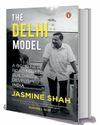
The Lok Sabha elections marked the first major political exercise in Jammu and Kashmir after the abrogation of Article 370 and the reorganisation of the state into two Union territories. The elections got over with the sixth phase of polling on May 25. In Kashmir, the turnout went up to 58 per cent, surpassing the previous highest of 49 per cent in 2014.
“It is the highest turnout for these five constituencies in the last 40 years,” said chief electoral officer P.K. Pole. It marks the end of the election boycott in Kashmir since the eruption of militancy in the late 1980s, paving the way for greater participation of people and separatist groups in the assembly elections later this year.
The three constituencies in Kashmir—Srinagar, Baramulla and Anantnag-Rajouri—saw a record turnout. Srinagar, known for poll boycotts, recorded 38 per cent, the highest in 25 years. In Baramulla, 59 per cent of voters cast their ballots, beating 46.65 per cent in 1996.
In 2019, when Rajouri and Poonch were not part of the Anantnag Lok Sabha constituency, voter participation stood at a mere 8.9 per cent. The Delimitation Commission expanded the constituency’s boundaries across the Pir Panjal to include Jammu’s Rajouri and Poonch, in 2022. These areas are largely inhabited by the Pahari community, tribal Gujjars and Bakerwals. On May 25, voter turnout here climbed up to 54.3 per cent. The surge in turnout can be attributed to several factors. There has been a political void because of the absence of a representative government following the collapse of the PDP-BJP alliance in June 2018. Second, there is a strong feeling of disempowerment among the people following the revocation of Article 370. Finally, the influence of separatist groups advocating for election boycott has waned.
This story is from the June 09, 2024 edition of THE WEEK India.
Start your 7-day Magzter GOLD free trial to access thousands of curated premium stories, and 9,000+ magazines and newspapers.
Already a subscriber ? Sign In
This story is from the June 09, 2024 edition of THE WEEK India.
Start your 7-day Magzter GOLD free trial to access thousands of curated premium stories, and 9,000+ magazines and newspapers.
Already a subscriber? Sign In

Forging the future
As the curtain falls on 2024, I take pride in the extraordinary milestones achieved under the leadership of Prime Minister Narendra Modi. This year stands as a testament to the Modi government's resolve to forge a resilient and forward-looking Bharat. From groundbreaking advancements in infrastructure to visionary global initiatives, these efforts resonate deeply with the vision of Viksit Bharat.

Our strange democracy
Abraham Lincoln is lauded as among the very best presidents the US ever had: the statesman par excellence successfully steered the nation through the devastating and perilous years of the American civil war. Not only did Lincoln manage to keep his country united, he also ensured the passage of the 13th amendment to the US constitution, which abolished slavery.

Five years of post-pandemic fashion
It has been five years since we discovered what Covid-19 was, and five years since it disrupted the world forever. The World Health Organization activated their emergency systems on January 1, 2020, and informed the world by January 4, 2020. By the end of that week, they had set guidelines for various countries to follow. Comparable to the Spanish flu of 1918, more than 7 million people have died of Covid according to official data. Unofficially, no one has an idea. WHO has just this week asked China to provide critical data to understand the virus's origins as a “moral and scientific imperative”.

Community spirit
Rhythm of Dammam opens a window to the world of African-origin Siddis of Uttara Kannada

'Breaking' down a scandal
Society Girl is not just a case study of a high-profile death in Pakistan but also a stark commentary on media trials

Progress card
Jasmine Shah's book tells you what the AAP has achieved in Delhi in the last 10 years

SENSE IN NONSENSE
In his latest book of poetry, Ruskin Bond is at his funniest

Get ready for Trump bump
The ‘butterfly effect’ is a beautiful, mysterious metaphor of the planet’s interconnectedness.

QUIET FLOWS THE FAITH
The melding of an ancient amorphous faith and the latest science; of an antique tradition and new practices; ways of life older than memory and new expressions is happening at Prayagraj in Uttar Pradesh.

Trash to treasure
How a weed-choked Dal Lake spurred Maninder Singh's journey to become a waste management visionary